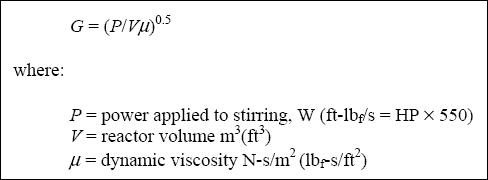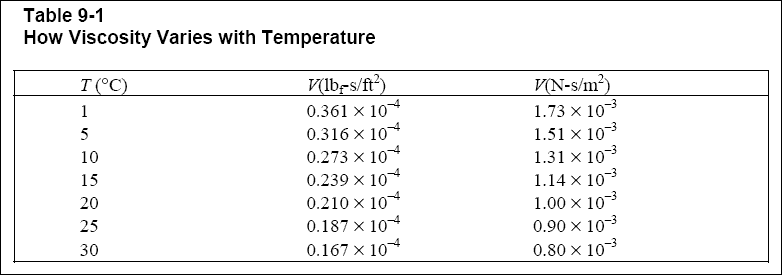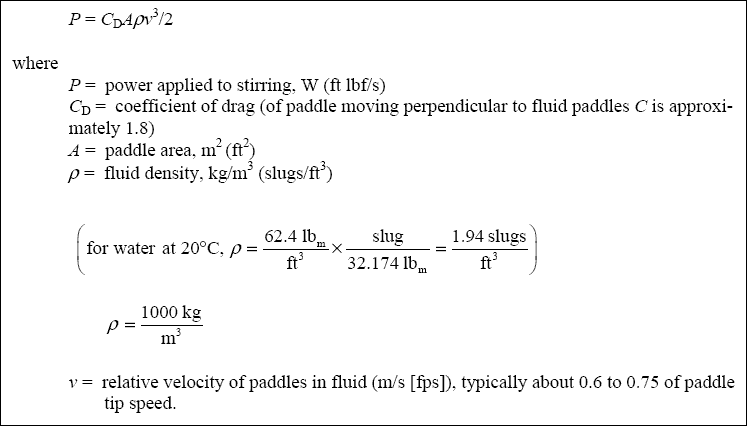Chemical Treatment - 09...
Chapter 9 - Mixing — General Discussion and Theory...
9-1. Introduction...
Mixing provides greater uniformity of the wastewater feed and disperses precipitating agents, coagulants, and coagulant
aids throughout the wastewater to ensure the most rapid precipitation reactions and subsequent settling of precipitates
possible. To quantify the degree of mixing, the following factors must be considered :
• The amount of energy supplied.
• The mixing residence time.
• The related turbulence effects of the specific size and shape of the tank.
( a ) The root mean square velocity gradient (typically denoted as G, units, (m/s)/m [fps/ft]) represents a measure of
shear intensity over the mixing basin. For mechanically stirred mixing basins, G can be calculated as follows :

( b ) Viscosity varies with temperature as shown in Table 9-1.

( c ) Power Requirements are determined from :

Paddle tip speed should be kept in the range of 0.3 to 1 m/s (1 to 3 fps) to minimize deposition and yet avoid destruction
of the floc.
( d ) This is an estimate of the power required. Manufacturers must be contacted to determine accurate power requirements.
9-2. Rapid Mixing...
Chemicals such as coagulants generally require rapid mixing. Chemical mixing systems should be designed to provide a
thorough and complete dispersal of the chemical throughout the influent. Rapid or flash mixing residence times typically
range from 30 seconds to 2 minutes, with 1 minute being the most common (EPA, 1987). The intensity and duration of the
mixing of the coagulant must be controlled to prevent undermixing or overmixing. Overmixing may breakup newly formed floc,
whereas undermixing can cause inadequate dispersal of coagulants, resulting in uneven dosing. For rapid-mix applications,
a typically accepted G-value is 300 s – 1.
9-3. Rapid Mixing Vessel Considerations...
Generally, circular mixing tanks are more efficient for rapid mixing than square or rectangular tanks. For tanks under
3,800 L (1,000 gallons) in capacity, portable turbine mixers are most practical. Typically, heavy-duty, top-entry turbine
mixers are used for larger tanks. For square tanks, where the top dimension is much greater than the liquid depth, several
side-entry mixers positioned next to each other are generally used. Design of mixing vessels requires consideration of
several factors including :
• Detention time.
• Bottom scour.
• Transport conditions.
• Flow distribution.
• Short circuiting.
9-4. Flocculation Mixing / Agitation...
Slow mixing/agitation is typically carried out in a
flocculator. Values of G for flocculation units typically range from 20 to 80 s – 1 . Values of G × t
(where t = seconds of residence time) ranging from 30,000 to 150,000 are commonly used for flocculation. Flocculator
retention times of 20–30 minutes are typical. Suggested flocculation references are Metcalf & Eddy (1991) and Clark
et al. (1971).




